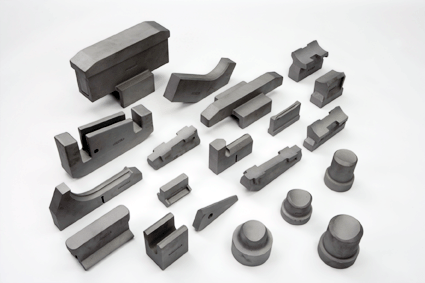What Is Low Pressure Die Casting?
Low-pressure die casting is a method of production that uses pressure – rather than gravity – to fill molds with molten metal such as aluminum and magnesium. In this process, the holding furnace is located below the cast and the liquid metal is forced upwards through a riser tube and into the cavity. The pressure is applied constantly, sometimes in increasing increments, to fill the mold and hold the metal in place within the die until it solidifies. Once the cast has solidified, the pressure is released and any residual liquid in the tube or cavity flows back into the holding furnace for “recycling.” When cooled, the cast is simply removed.
Advantages of Low-Pressure Die Casting
This method allows precise control of the filling process. Injecting the molten metal in this way reduces oxide formation and reduces porosity, ensuring superior consistency from top to bottom. As such, low pressure casting results in exceptional density and strength values as well as excellent dimensional accuracy. While this method is greatly suited to simpler, symmetrical forms, more complex geometries can be achieved with the use of sand cores within the molds. With the advantage of uncomplicated machinery and technology, the low pressure die casting process lends itself well to automation.
The Auto Industry and Beyond
The automotive industry has relied upon low-pressure die casting for decades to create strong, high-quality aluminum casts. However, due to its relatively slow casting process, its use was primarily limited to the luxury class of the automotive market, where lower quantities and higher costs are expected. Now, though, having successfully sought out ways to make this method more cost-effective (e.g. making the machines larger overall, but space-saving due to their vertical construction), the automotive industry has decreased the time of the casting cycle by 50%, making low-pressure casting a far more economical choice than it once was.
Although low-pressure casting is an exceptional choice for automotive components such as engine blocks, wheels, and suspension parts, non-automotive industries such as electronics, machine-building, and pipe assemblies also benefit from its lower machining costs, high volume yield, and exceptional metallurgic quality. Cast aluminum’s superior electrical and thermal conductivity make it a very desirable choice for all of these industries.
Alternatives
There are several alternatives to low-pressure casting. One such alternative is sand casting, which accounts for the vast majority of metal casting overall. By forming a mixture of sand, clay, and water around complex shapes, molds are created, filled with molten metal, and broken away once the cast has solidified. The high-heat properties of sand make this an excellent method of molding. Investment casting is another option. Investment casting is favored today by many industries for its accuracy and versatility. Another alternative to low-pressure casting is gravity casting (or permanent mold casting). A simple process of filling hollow forms with molten metal and allowing gravity to flow into every recess of the mold, gravity casting offers several advantages such as smooth surfaces, superb dimensional accuracy and faster production times. The gravity die casting process is well suited for the automotive industry.
OBT has always been a trusted partner in the foundry industry. We provide precision casting, die casting, sand casting, lost wax casting, forging and other processes. Surface treatment methods include sandblasting, chrome plating, dipping, hot dipping, surface hardening, powder coating, galvanizing, etc. Mainly used for auto parts, marine hardware accessories, railway transportation accessories, furniture hardware, machined parts and pump valves.


 O.B.T Manufacture
O.B.T Manufacture 

